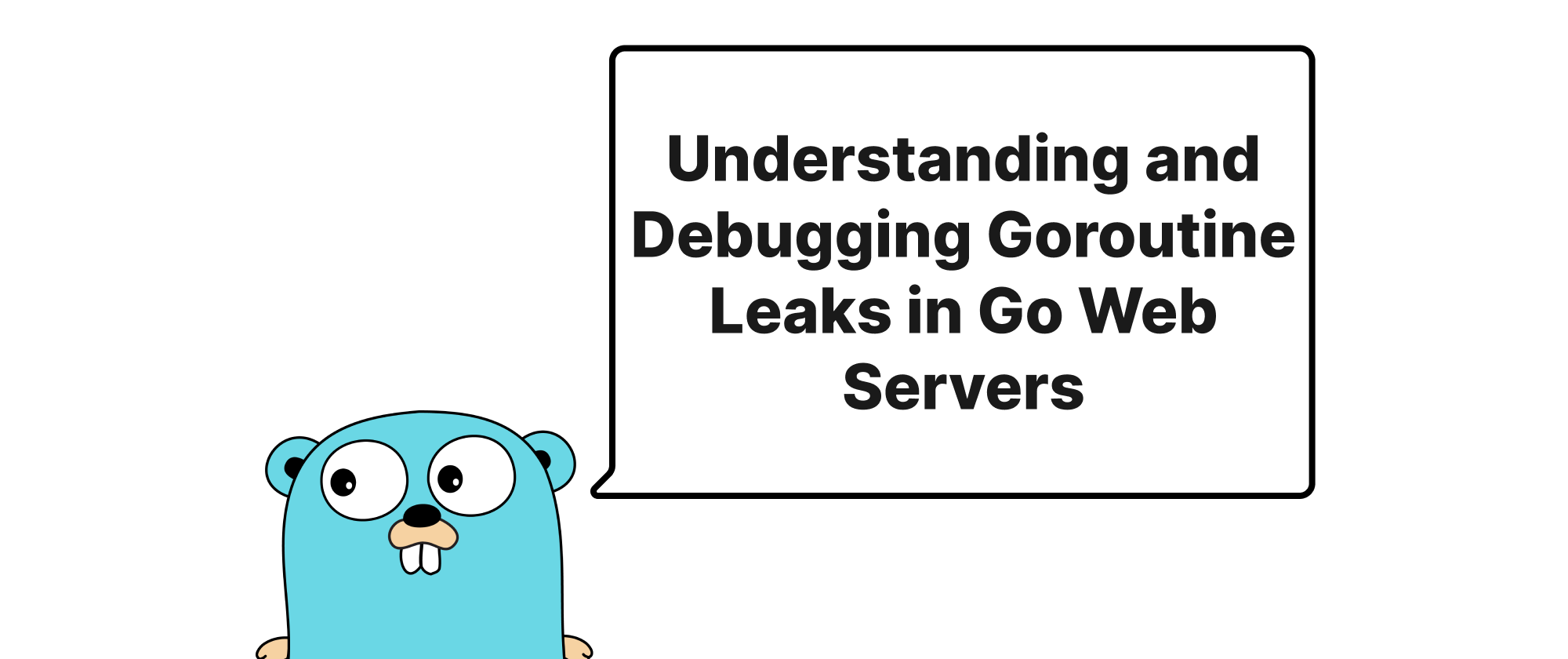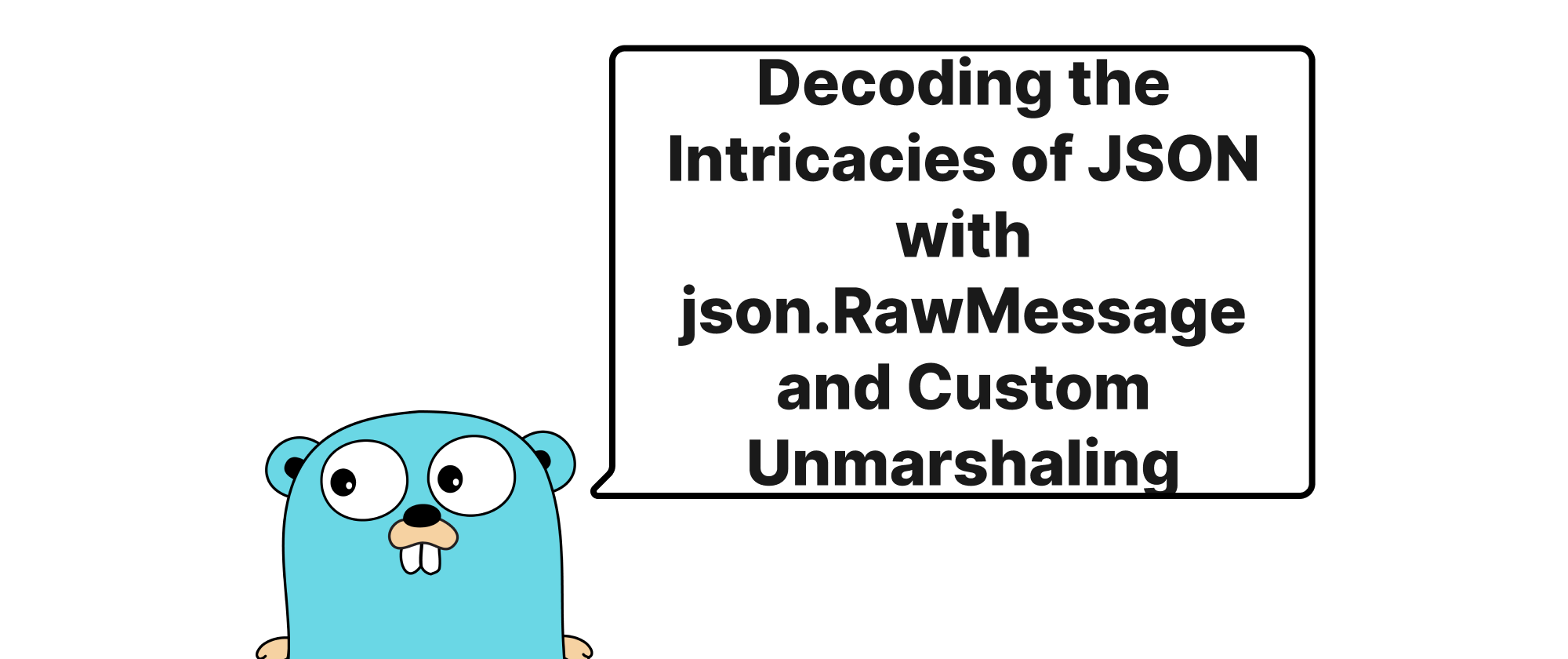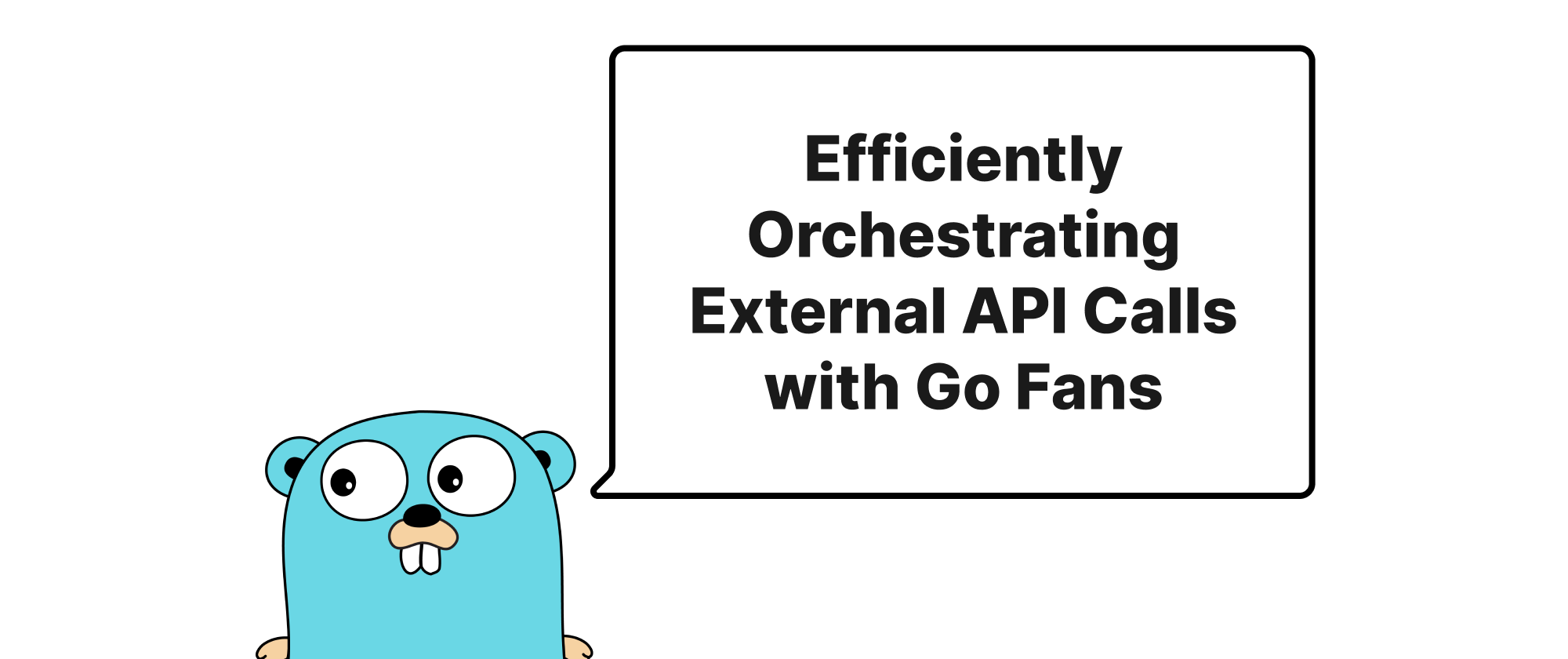Understanding and Debugging Goroutine Leaks in Go Web Servers
Emily Parker
Product Engineer · Leapcell

Introduction
In the world of Go concurrency, goroutines are lightweight, cheap, and fundamental. They are a powerful abstraction for building highly concurrent and scalable applications, especially web servers. However, this power comes with a responsibility: managing their lifecycle. Unmanaged goroutines, often referred to as "goroutine leaks," can lead to various problems, including increased memory consumption, CPU exhaustion, and eventual server instability or crashes. For long-running applications like web servers, these leaks can be particularly insidious, slowly degrading performance over time until a critical failure occurs. Understanding how these leaks happen and, more importantly, how to identify and fix them is crucial for maintaining robust and performant Go web services. This blog post will explore common goroutine leak scenarios in web servers and equip you with the practical tools and techniques to debug them effectively.
Understanding Goroutine Leaks
Before diving into common leak scenarios, let's establish a foundational understanding of key concepts:
- Goroutine: A lightweight, independently executing function, managed by the Go runtime. Goroutines are multiplexed onto a smaller number of OS threads.
- Goroutine Leak: Occurs when a goroutine is started but never terminates. It continues to consume memory (stack space, heap allocations it references) and, although not actively executing CPU instructions, it remains in memory, contributing to the process's overall resource footprint. Over time, an accumulation of leaked goroutines can exhaust system resources.
- Context: In Go,
context.Contextis used to carry deadlines, cancellation signals, and other request-scoped values across API boundaries and goroutines. It's a critical mechanism for signaling work cancellation, especially in HTTP servers.
Goroutine leaks typically arise when a goroutine is waiting indefinitely for an event that never happens, or when it’s designed to run forever but its parent (the one that go it) doesn’t ensure its termination. In web servers, inbound HTTP requests often trigger goroutines. If these request-handling goroutines, or any goroutines they spawn, do not complete their work and exit, they become leaks.
Common Goroutine Leak Scenarios
Let's examine some frequent culprits for goroutine leaks in Go web servers, accompanied by illustrative code examples.
1. Unbounded Channel Writes Without Corresponding Reads
One of the most classic leak scenarios involves goroutines writing to a channel without anybody reading from it (or not enough readers). If the channel is unbuffered, the writer will block indefinitely. If it's buffered and fills up, the writer will block. If the writer is a goroutine launched per request, it will leak.
Consider a an imaginary async logging service:
package main import ( "fmt" "log" "net/http" "time" ) // This buffered channel can lead to leaks if not handled carefully var logCh = make(chan string, 100) func init() { // A "leaky" logger goroutine that might block go func() { for { select { case entry := <-logCh: // Simulate logging operation time.Sleep(50 * time.Millisecond) // Simulate I/O or processing time fmt.Printf("Logged: %s\n", entry) // No explicit exit mechanism for this goroutine } } }() } func logMessage(msg string) { // Goroutine sending to a channel. If logCh fills up and nobody is reading, // this sender goroutine will block here. logCh <- msg } func leakyHandler(w http.ResponseWriter, r *http.Request) { go func() { // This goroutine runs for every request. // If logCh is full and the global log consumer is slow/stuck, // this goroutine will block indefinitely on `logMessage` // and will never terminate. logMessage(fmt.Sprintf("Request received from %s", r.RemoteAddr)) }() time.Sleep(10 * time.Millisecond) // Simulate some quick processing w.WriteHeader(http.StatusOK) w.Write([]byte("Request processed (potentially leaking a goroutine)")) } func main() { http.HandleFunc("/leaky", leakyHandler) log.Println("Server starting on :8080") log.Fatal(http.ListenAndServe(":8080", nil)) }
In leakyHandler, we asynchronously send a log message. If the logCh buffer fills up faster than the init goroutine can process messages, the logMessage call (and thus the goroutine created by go func() {...}) will block indefinitely. Since this occurs per request, repeated requests will create an ever-growing number of blocked goroutines.
Solution: Use a select statement with a default case or a context.Done() signal for non-blocking sends or graceful termination.
func logMessageSafe(msg string, ctx context.Context) { select { case logCh <- msg: // Message sent successfully case <-ctx.Done(): // Context was cancelled, sender should give up fmt.Printf("Log message '%s' canceled: %v\n", msg, ctx.Err()) case <-time.After(50 * time.Millisecond): // Timeout for sending fmt.Printf("Log message '%s' timed out after 50ms\n", msg) } } func safeHandler(w http.ResponseWriter, r *http.Request) { go func() { // Use the request context to ensure the log goroutine respects request cancellation logMessageSafe(fmt.Sprintf("Request received from %s", r.RemoteAddr), r.Context()) }() w.WriteHeader(http.StatusOK) w.Write([]byte("Request processed (safely)")) }
2. Goroutines Waiting on Closed or Unresponsive Network Connections
HTTP servers frequently interact with external services (databases, other microservices, caches). If a goroutine is spawned to perform an I/O operation (e.g., fetching data from a third-party API) and that connection hangs, times out very slowly, or the remote server becomes unresponsive, the goroutine performing the I/O will block. If the surrounding code doesn't have a timeout or context cancellation mechanism, it will leak.
package main import ( "context" "fmt" "io/ioutil" "log" "net/http" "time" ) func externalAPICall(ctx context.Context) (string, error) { req, err := http.NewRequestWithContext(ctx, "GET", "http://unresponsive-third-party-api.com/data", nil) if err != nil { return "", fmt.Errorf("failed to create request: %w", err) } client := &http.Client{ // No explicit timeout set on the client, relying on context // or default, which might be too long for an unresponsive server. // For example, if the API never responds for a long time, // the goroutine will block on Do(). } resp, err := client.Do(req) if err != nil { return "", fmt.Errorf("API call failed: %w", err) } defer resp.Body.Close() body, err := ioutil.ReadAll(resp.Body) if err != nil { return "", fmt.Errorf("failed to read response body: %w", err) } return string(body), nil } func leakyExternalCallHandler(w http.ResponseWriter, r *http.Request) { responseCh := make(chan string) var cancel context.CancelFunc // Create a context with a timeout for the external API call ctx, cancel := context.WithTimeout(r.Context(), 5 * time.Second) defer cancel() // Ensure cancellation is called on function exit go func() { // If externalAPICall hangs for > 5 seconds, this goroutine will // still be blocked on client.Do(req) even if the request context is cancelled. // The `main` goroutine may have already responded to the client while this one is still alive. data, err := externalAPICall(ctx) // externalAPICall should *respect* ctx, but sometimes it's insufficient. if err != nil { responseCh <- fmt.Sprintf("Error fetching data: %v", err) } else { responseCh <- fmt.Sprintf("Data: %s", data) } }() select { case result := <-responseCh: w.Write([]byte(result)) case <-ctx.Done(): w.WriteHeader(http.StatusGatewayTimeout) w.Write([]byte("External API call timed out")) } } func main() { http.HandleFunc("/external", leakyExternalCallHandler) log.Println("Server starting on :8080") log.Fatal(http.ListenAndServe(":8080", nil)) }
The example above shows a common pitfall: even if http.NewRequestWithContext is used, the http.Client itself might need a Timeout field to prevent indefinite blocking in certain network conditions (e.g., connection establishment, specific phases of a TLS handshake). While context.WithTimeout does cancel the request, the goroutine performing client.Do(req) might still be blocked internally, especially if the http.Client.Timeout is not set or is much longer than the context timeout.
Solution: Always set a reasonable http.Client.Timeout to cover the entire request (connection, write, read). Ensure all long-running operations (especially I/O) are cancelable via context.Done().
// Correct http.Client setup var httpClient = &http.Client{ Timeout: 3 * time.Second, // Timeout for the entire request } func externalAPICallSafe(ctx context.Context) (string, error) { req, err := http.NewRequestWithContext(ctx, "GET", "http://unresponsive-third-party-api.com/data", nil) if err != nil { return "", fmt.Errorf("failed to create request: %w", err) } resp, err := httpClient.Do(req) // Using the client with a timeout if err != nil { return "", fmt.Errorf("API call failed: %w", err) } defer resp.Body.Close() body, err := ioutil.ReadAll(resp.Body) if err != nil { return "", fmt.Errorf("failed to read response body: %w", err) } return string(body), nil } func safeExternalCallHandler(w http.ResponseWriter, r *http.Request) { responseCh := make(chan string) ctx, cancel := context.WithTimeout(r.Context(), 5 * time.Second) defer cancel() go func() { // This goroutine will exit once externalAPICallSafe returns, // either with data or an error (including timeout errors from httpClient). data, err := externalAPICallSafe(ctx) if err != nil { // Non-blocking send: if the main goroutine // has already returned (e.g., due to context timeout), // this send will be skipped. select { case responseCh <- fmt.Sprintf("Error fetching data: %v", err): case <-ctx.Done(): fmt.Printf("Goroutine finished, but parent context done: %v\n", ctx.Err()) } } else { select { case responseCh <- fmt.Sprintf("Data: %s", data): case <-ctx.Done(): fmt.Printf("Goroutine finished, but parent context done: %v\n", ctx.Err()) } } }() select { case result := <-responseCh: w.Write([]byte(result)) case <-ctx.Done(): w.WriteHeader(http.StatusGatewayTimeout) w.Write([]byte("External API call timed out")) } }
The select statements sending to responseCh in safeExternalCallHandler are crucial. They ensure that if the main request handler goroutine cancels the context and returns to the client, the async goroutine doesn't block forever trying to send a value to a channel that nobody is listening to anymore.
3. Goroutines Looping Indefinitely Without an Exit Condition
Sometimes, a worker goroutine is designed to process tasks from a channel in a for {} loop. If the application shuts down or the source of tasks dries up, this goroutine might continue to wait on the channel indefinitely, even if its work is no longer needed.
package main import ( "log" "net/http" "sync" "time" ) var ( taskQueue = make(chan string) wg sync.WaitGroup ) func worker() { defer wg.Done() for { task := <-taskQueue // Blocks here indefinitely if taskQueue is never closed and has no more tasks. log.Printf("Processing task: %s", task) time.Sleep(100 * time.Millisecond) // Simulate work } } func init() { // Start two workers wg.Add(2) go worker() go worker() } func queueTaskHandler(w http.ResponseWriter, r *http.Request) { task := r.URL.Query().Get("task") if task == "" { task = "default-task" } taskQueue <- task // This sender might also block if workers are slow w.WriteHeader(http.StatusOK) w.Write([]byte(fmt.Sprintf("Task '%s' queued", task))) } func main() { http.HandleFunc("/queue", queueTaskHandler) log.Println("Server starting on :8080") log.Fatal(http.ListenAndServe(":8080", nil)) // In a real application, you might want to gracefully shut down workers // by closing taskQueue and waiting for wg.Wait() here. // If the server exits without this, workers might be left in a blocked state. // For instance, if no more tasks are sent but the server is still running. }
In this example, if the application stops submitting tasks to taskQueue but never closes it, the worker goroutines will block forever on <-taskQueue. If the server is gracefully shut down, but the worker goroutines are long-lived and weren't explicitly terminated, they become leaks.
Solution: Use a context.Context for cancellation or explicitly close the channel and iterate using for range.
var ( taskQueueSafe = make(chan string) stopWorkers = make(chan struct{}) // Signal channel to stop workers wgSafe sync.WaitGroup ) func workerSafe(workerID int) { defer wgSafe.Done() for { select { case task, ok := <-taskQueueSafe: if !ok { log.Printf("Worker %d: Task queue closed, exiting.", workerID) return // Channel closed, exit goroutine } log.Printf("Worker %d processing task: %s", workerID, task) time.Sleep(100 * time.Millisecond) case <-stopWorkers: // Or use a context.Done() channel log.Printf("Worker %d: Stop signal received, exiting.", workerID) return // Exited gracefully } } } func init() { wgSafe.Add(2) go workerSafe(1) go workerSafe(2) } // In main or a shutdown hook: func shutdownWorkers() { // Signal workers to stop close(stopWorkers) // Optionally, close taskQueue for good measure if no more producers should send // close(taskQueueSafe) wgSafe.Wait() // Wait for all workers to finish their current task and exit log.Println("All workers shut down.") }
Debugging Goroutine Leaks
Go provides excellent tooling for identifying and debugging goroutine leaks.
1. net/http/pprof
The net/http/pprof package is your primary tool. By importing it, you expose several endpoints, including /debug/pprof/goroutine, which provides a snapshot of all active goroutines.
package main import ( "log" "net/http" _ "net/http/pprof" // Import this for pprof endpoints ) func main() { http.HandleFunc("/leak", func(w http.ResponseWriter, r *http.Request) { go func() { time.Sleep(10 * time.Minute) // Simulate a long-running, potentially leaked goroutine }() w.Write([]byte("Leaking a goroutine...")) }) log.Println("Server starting on :8080, pprof available at /debug/pprof") log.Fatal(http.ListenAndServe(":8080", nil)) }
Now, hit /leak several times and then visit /debug/pprof/goroutine. You'll see a stack trace for all active goroutines. Pay attention to goroutines that are blocked (chan receive, time.Sleep, select, network I/O) and whose stack traces point to your code where a leak might be occurring.
A more effective way to analyze this is to use the go tool pprof command:
# Get a goroutine profile go tool pprof http://localhost:8080/debug/pprof/goroutine # This will launch an interactive profiling session. # Use 'top' to see functions consuming the most goroutines. # Use 'list <function_name>' to see the source code of a suspicious function. # Use 'web' to generate a SVG visualization (requires Graphviz).
You can compare profiles taken at different times to identify increasing goroutine counts for specific code paths.
# Save profile to a file curl -o goroutine_profile_initial.gz http://localhost:8080/debug/pprof/goroutine?debug=1 # After some load curl -o goroutine_profile_after_load.gz http://localhost:8080/debug/pprof/goroutine?debug=1 # Compare them go tool pprof -http=:8000 --diff_base goroutine_profile_initial.gz goroutine_profile_after_load.gz
This diffing functionality is invaluable for pinpointing where new goroutines are being created and never terminated.
2. Runtime Metrics
You can also programmatically check the number of active goroutines using runtime.NumGoroutine().
package main import ( "fmt" "net/http" "runtime" "time" ) func handler(w http.ResponseWriter, r *http.Request) { go func() { // A goroutine that will eventually leak time.Sleep(5 * time.Minute) }() fmt.Fprintf(w, "Goroutines: %d", runtime.NumGoroutine()) } func main() { http.HandleFunc("/", handler) http.ListenAndServe(":8080", nil) }
While not a debugging tool itself, monitoring runtime.NumGoroutine() over time (e.g., via Prometheus metrics) can reveal a constantly increasing trend, signaling a leak.
3. Carefully Reviewing Code for Concurrency Patterns
A proactive approach involves regularly reviewing code, particularly sections involving go statements, channels, and select blocks. Ask yourself:
- Does every
gostatement have a clear exit condition? - Are all channel operations (sends and receives) protected by timeouts or
context.Done()signals? - Are channels that are no longer needed being closed?
- Is error handling robust enough to prevent indefinite blocking in network or I/O operations?
- Are
sync.WaitGrouporcontext.Contextbeing used correctly for managing worker goroutines?
Conclusion
Goroutine leaks, while a common pitfall in concurrent Go programming, are entirely avoidable with careful design and systematic debugging. By understanding the common scenarios—unbounded channel operations, unresponsive I/O, and missing exit conditions—and leveraging Go's powerful pprof tools, you can effectively identify and resolve these issues. Proactive code review, coupled with continuous monitoring of goroutine counts, forms a strong defense against resource exhaustion and ensures your Go web servers remain stable and performant. Building leak-proof Go applications hinges on a disciplined approach to concurrency management, always considering how and when each goroutine will conclude its execution.


